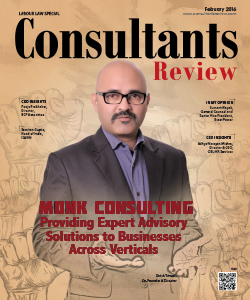Cover Story
25 Most Promising Labour Law Consultants
The Constitution of India, formed in 1950, focused itself on a variety of things, significantly the caste barrier. But some of the laws and articles that went under the hammer did not involve the workers or the labourers of the society, as India never opened up to industrial revolution like the Japanese did after the WW2 though both were in similar devastation, in fear of an unprecedented private take over. But when it did happen, inevitably, there was slackness in handling the protests and strikes against the employers for gorging on the ambiguous nature of the labour laws in India. Somewhere, the rights of the workers, conditions they work in and wages paid for their work & time were and are a bone of contention. So, when the economic flood gates were opened in 1991, there was a severe need for industries from every vertical...
Contents
-
10
-
8
Labour Law Consulting in India
Sumant Nayak, General Counsel and Senior Vice President, Essar Power
-
14
Tips on Buying a 'Starter' Home
Kishor Pate, CMD, Amit Enterprises Housing
-
20
Total compliance key to corporate success
Pooja Prabhakar, Director, BCP Associates
-
24
Who are the Labour Laws for?
Aditya Narayan Mishra, Director & CEO, CIEL HR Services
-
29
Labour Law Consulting in India
AmolApte, Associate VP Legal, Future Generali
-
33
Internet Governance & Capacity-Building Strategies for the Future
Samiran Gupta, Head of India, ICANN
-
38
CEO's New Trusted Adviser - The Lawyer
Vikram Shroff, Head - HR Laws, Nishith Desai Associates
-
42
Indian Millennials And Home Ownership: Back To The Basics
Arvind Jain, MD - Pride Group
🍪 Do you like Cookies?
We use cookies to ensure you get the best experience on our website. Read more...


